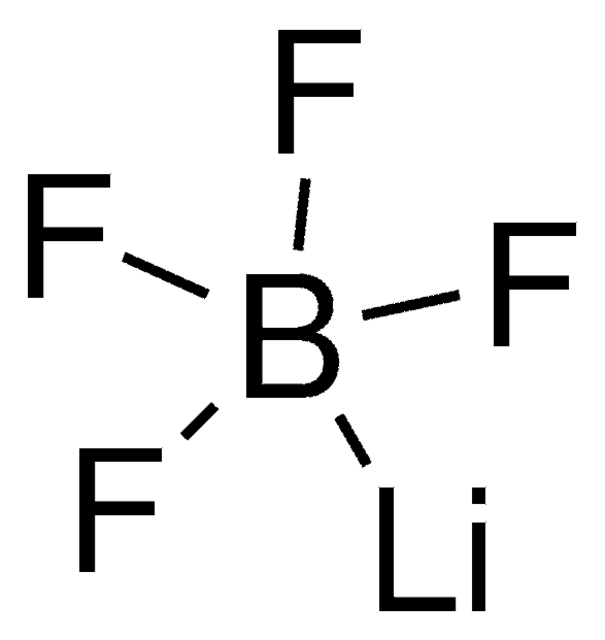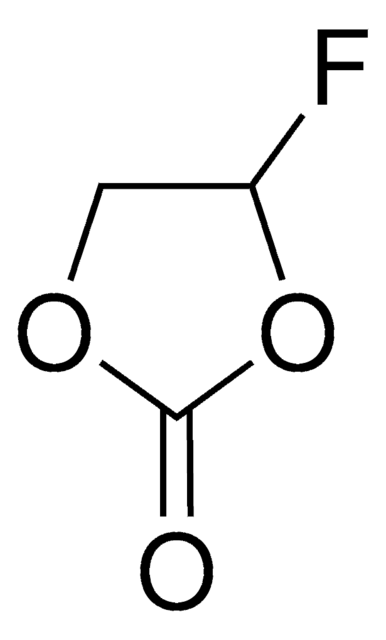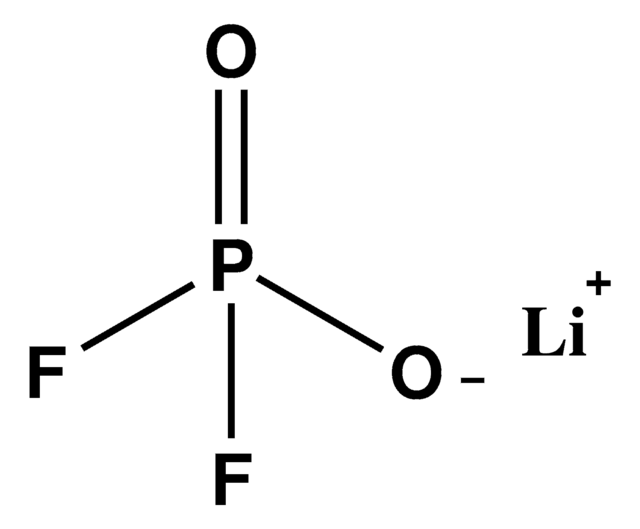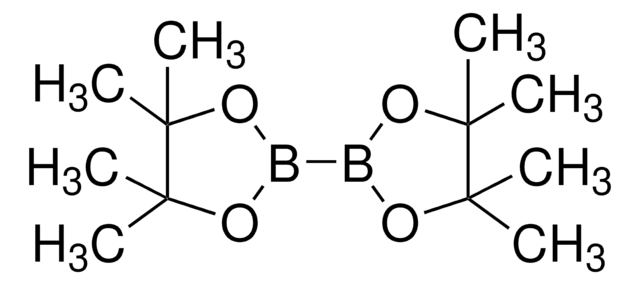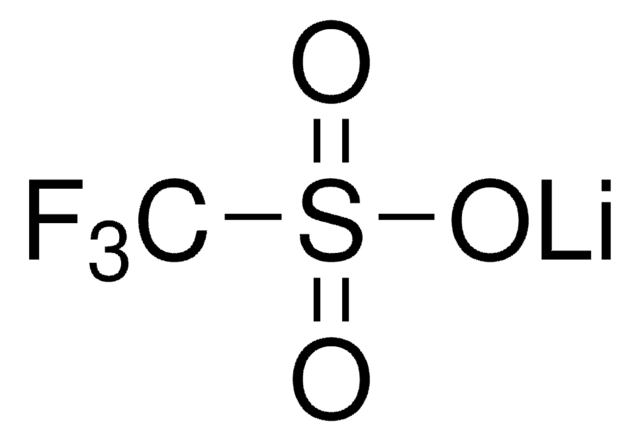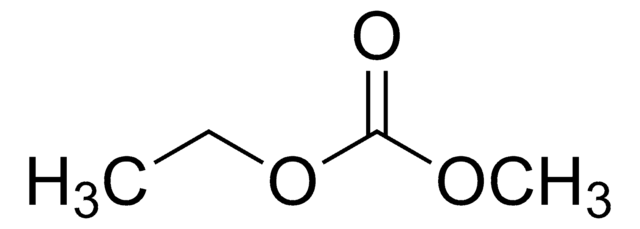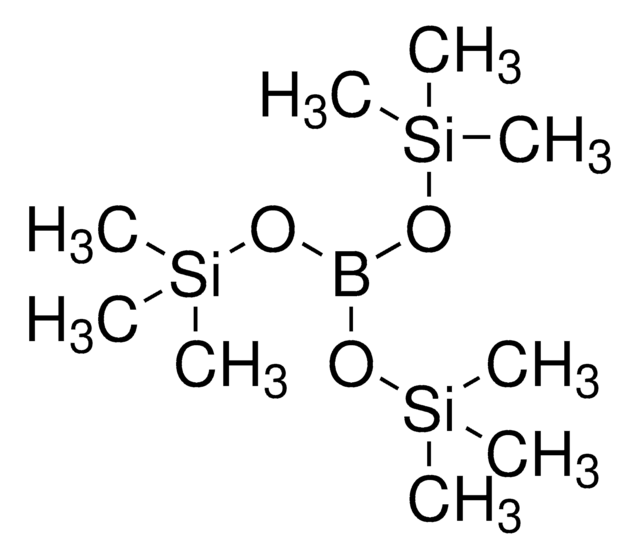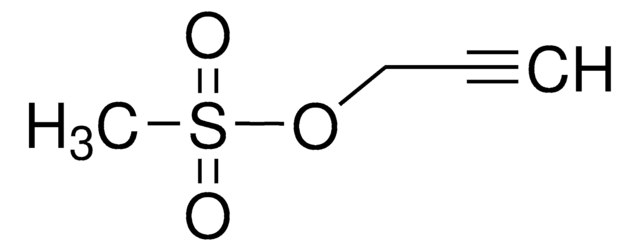757136
Lithium bis(oxalato)borate
Sinónimos:
LiBOB, Lithium bis(ethanedioato)borate, Lithium bis(oxalate)borate
About This Item
Productos recomendados
form
powder or crystals
Quality Level
greener alternative product characteristics
Design for Energy Efficiency
Learn more about the Principles of Green Chemistry.
sustainability
Greener Alternative Product
mp
>300 °C (lit.)
application(s)
battery manufacturing
greener alternative category
SMILES string
[Li+].O=C1O[B-]2(OC1=O)OC(=O)C(=O)O2
InChI
1S/C4BO8.Li/c6-1-2(7)11-5(10-1)12-3(8)4(9)13-5;/q-1;+1
InChI key
NVQAYVUCVASGDK-UHFFFAOYSA-N
¿Está buscando productos similares? Visita Guía de comparación de productos
General description
Application
Legal Information
Related product
signalword
Danger
hcodes
Hazard Classifications
Acute Tox. 4 Oral - Eye Dam. 1 - Skin Sens. 1A
Storage Class
13 - Non Combustible Solids
wgk_germany
WGK 1
Elija entre una de las versiones más recientes:
¿Ya tiene este producto?
Encuentre la documentación para los productos que ha comprado recientemente en la Biblioteca de documentos.
Los clientes también vieron
Artículos
Dr. Sun reviews the recent advances in solid-state rechargeable batteries and cover the fundamentals of solid electrolytes in solid-state batteries, the theory of ion conduction, and the structures and electrochemical processes of solid-state Li batteries.
Discover more about advancements being made to improve energy density of lithium ion battery materials.
Lithium-ion batteries (LIBs) have been widely adopted as the most promising portable energy source in electronic devices because of their high working voltage, high energy density, and good cyclic performance.
The critical technical challenges associated with the commercialization of electric vehicle batteries include cost, performance, abuse tolerance, and lifespan.
Nuestro equipo de científicos tiene experiencia en todas las áreas de investigación: Ciencias de la vida, Ciencia de los materiales, Síntesis química, Cromatografía, Analítica y muchas otras.
Póngase en contacto con el Servicio técnico
